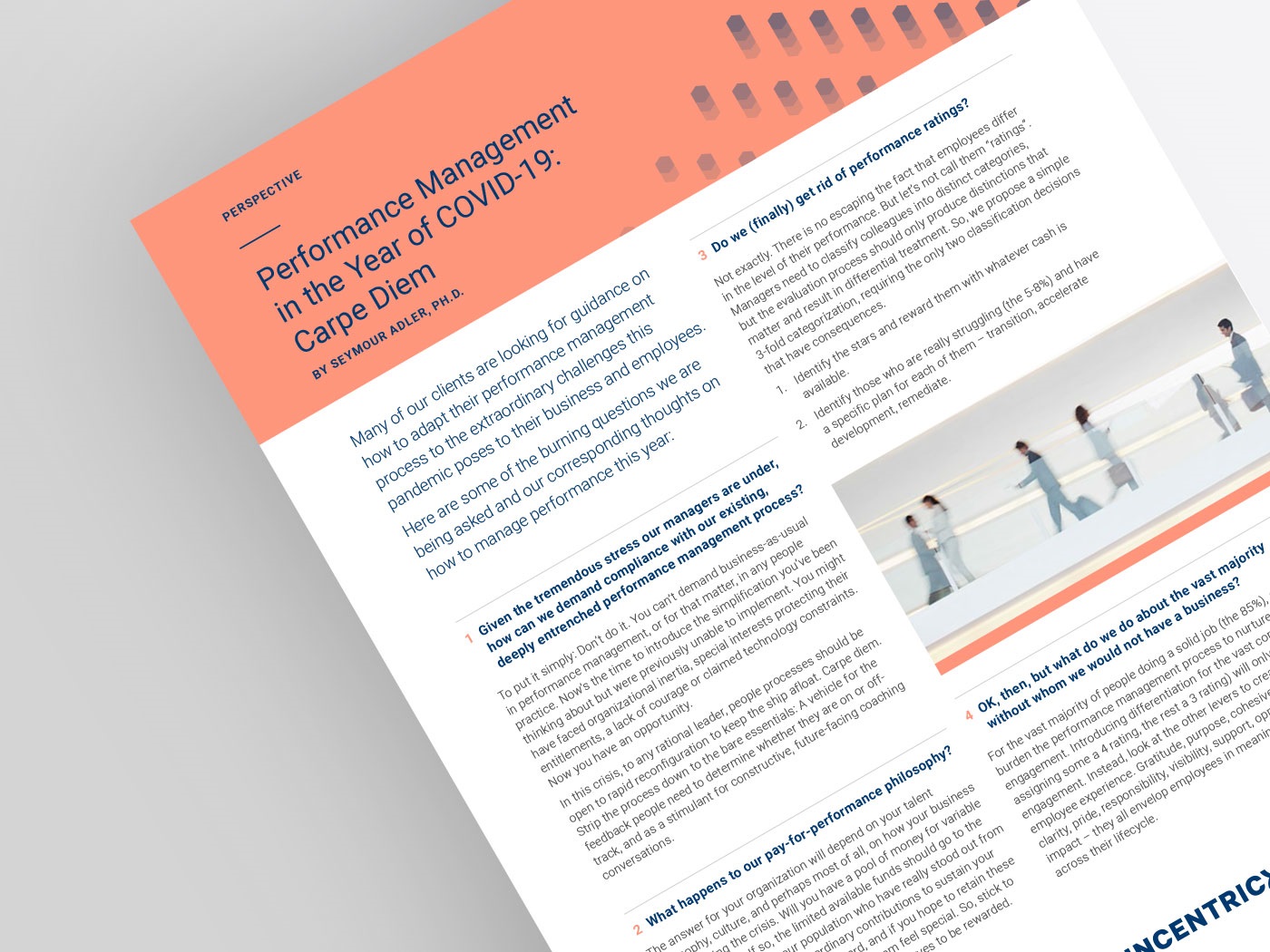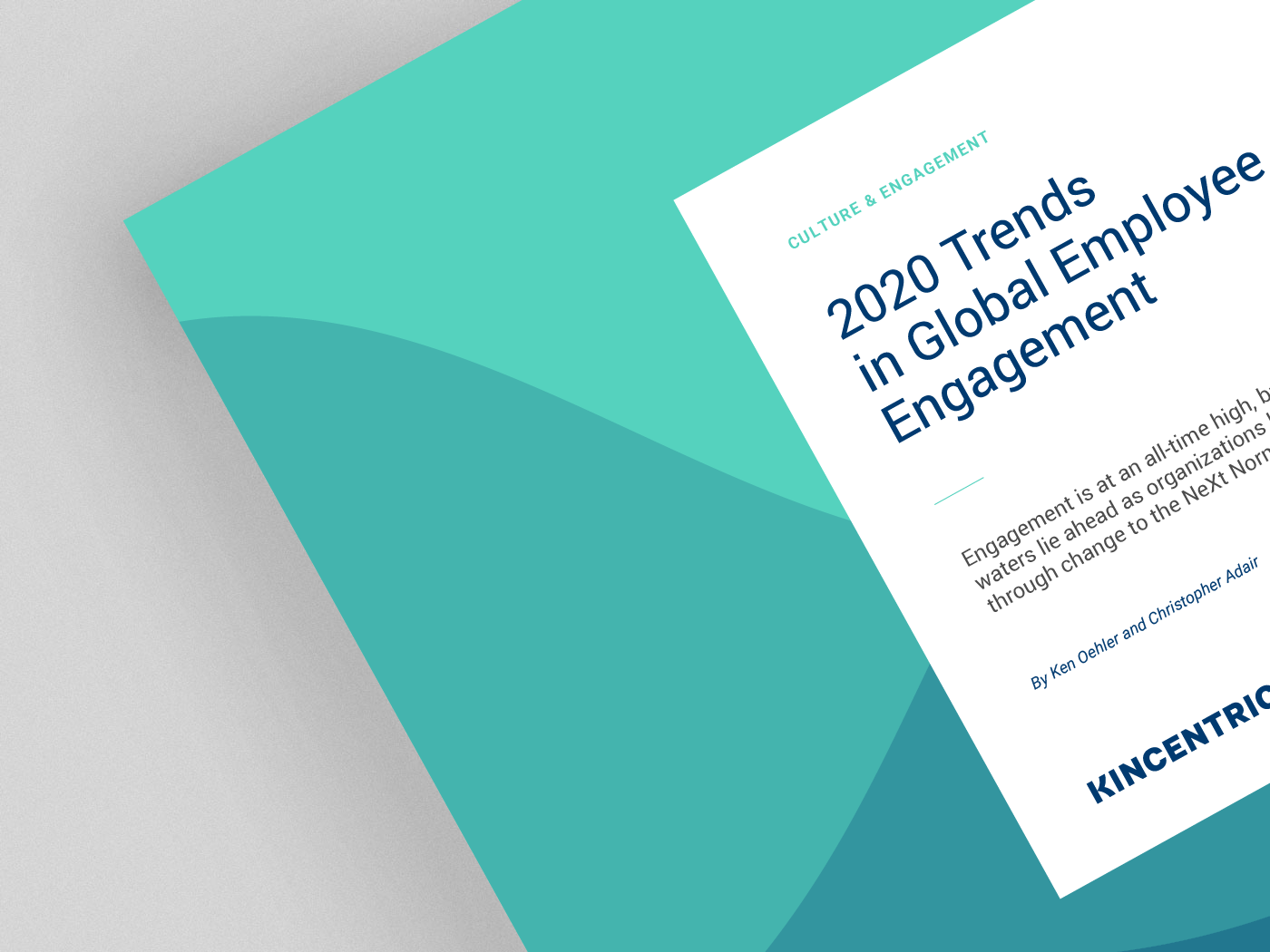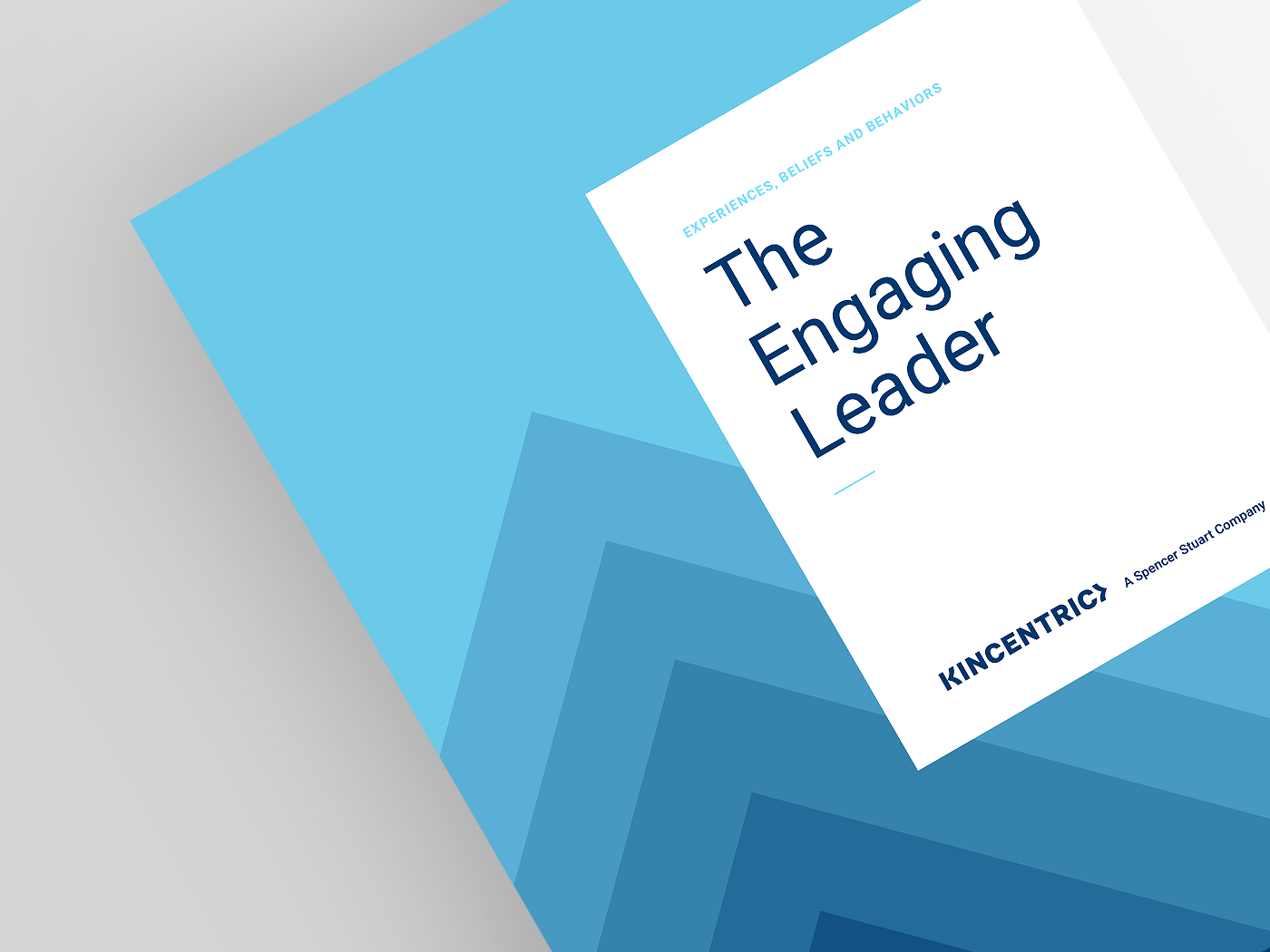
Many of our clients are looking for guidance on how to adapt their performance management process to the extraordinary challenges this pandemic poses to their business and employees.
Here are some of the burning questions we are being asked and our corresponding thoughts on how to manage performance this year:
1. Given the tremendous stress our managers are under, how can we demand compliance with our existing, deeply entrenched performance management process?
To put it simply: Don’t do it. You can’t demand business-as-usual in performance management, or for that matter, in any people practice. Now’s the time to introduce the simplification you’ve been thinking about but were previously unable to implement. You might have faced organizational inertia, special interests protecting their entitlements, a lack of courage or claimed technology constraints. Now you have an opportunity.
In this crisis, to any rational leader, people processes should be open to rapid reconfiguration to keep the ship afloat. Carpe diem. Strip the process down to the bare essentials: A vehicle for the feedback people need to determine whether they are on or off-track, and as a stimulant for constructive, future-facing coaching conversations.
2. What happens to our pay-for-performance philosophy?
The answer for your organization will depend on your talent philosophy, culture, and perhaps most of all, on how your business is weathering the crisis. Will you have a pool of money for variable compensation? If so, the limited available funds should go to the stars, that 5-12% of your population who have really stood out from the crowd and made extraordinary contributions to sustain your business. They deserve the reward, and if you hope to retain these talented people, you’d better make them feel special. So, stick to your philosophy—great performance deserves to be rewarded.
3. Do we (finally) get rid of performance ratings?
Not exactly. There is no escaping the fact that employees differ in the level of their performance. But let’s not call them “ratings”. Managers need to classify colleagues into distinct categories, but the evaluation process should only produce distinctions that matter and result in differential treatment. So, we propose a simple 3-fold categorization, requiring the only two classification decisions that have consequences.
4. OK, then, but what do we do about the vast majority without whom we would not have a business?
For the vast majority of people doing a solid job (the 85%), don’t burden the performance management process to nurture their engagement. Introducing differentiation for the vast core (e.g. assigning some a 4 rating, the rest a 3 rating) will only erode engagement. Instead, look at the other levers to create a positive employee experience. Gratitude, purpose, cohesiveness, caring, clarity, pride, responsibility, visibility, support, opportunities for impact – they all envelop employees in meaningful moments across their lifecycle.
5. With our original 2020 performance goals out the window, how are we supposed to assess performance?
This is the year to shift from the What to the How in performance evaluation. For most, the 2020 goals assigned in December or January are now wholly irrelevant in May and June 2020. Or worse, they guarantee feelings of failure as business conditions have made those goals unattainable. What matters today is how people are responding to this crisis. Who is showing amazing agility and nimbleness? Who is demonstrating intense focus and prioritization required to deliver in the face of chaos and distraction? Who is reaching out and forging deep and enduring relationships with customers, peers and direct reports? Who is showing the courage and commitment to act boldly in the face of extraordinary risk? And who is using downtime to invest in upskilling, building future-facing capability for themselves and for teammates? These are the behaviors that ought to receive disproportionate weight in defining performance.
6. Should performance evaluations still inform our Talent Reviews?
This crisis has pulled oft-hidden leadership talent capabilities—or their lack—right into the open. We have seen people who we thought had all the makings of great potential in last year’s Talent Review collapse under the strain and vicious uncertainties of the pandemic environment. These ‘hi-po’s’ have been reluctant to give up on the tried-and-true formula that previously drove their success. Their responses have been too slow or have zig-zagged wildly as conditions changed. And they have projected smug self-assurance and certainty in the face of unprecedented unknowns.
In contrast, we have seen other leaders assessed as quite ordinary, shift strategy on a dime, energize their teams, demonstrate caring in open and genuine ways and act with creativity and boldness. They have connected with and helped stabilize the world for their teams. And guess what? These are the leadership characteristics our post-Covid world will require: Leading nimbly and boldly, with heart.
Now is the time to redefine the leadership model for 2022 and capture a holistic profile of genuine potential. Given the likely increase in predicted early retirement of senior leadership once the dust settles, the insights collected today will strengthen the pipeline we’ll need to fill the void.
7. The weak link in our performance management has always been the inability of our managers to have impactful performance conversations with their employees. Won’t counting on our managers more just make the situation worse?
Our research shows that leadership has mutated in the face of COVID-19. Most leaders today are touching base with individuals in their teams more frequently, more deeply, more emotionally and more holistically. Bosses and direct reports are virtually on each other’s homes and meeting in situations where they both face potential life-threatening pressures. A stronger foundation of caring and trust exists than ever before for impactful coaching and mentoring. We have evidence from our employee pulse surveys that meaningful conversations are occurring at an unprecedented level. Of course, you still may need to nudge managers to remember to ask how things are going, inquire about the obstacles they are facing in completing work, and share ideas about how to address those challenges.
For managers who are not yet comfortable initiating constructive conversations, we have created the Kincentric Virtual Coach app, which provides nudges and toolkits, often and in a just-in-time fashion. No more excuses for letting managers off the hook for actually managing performance.
8. We are contemplating RIFs or extended furloughs. Wouldn’t accelerating the performance evaluation cycle be helpful as input to downsizing decisions?
Don’t even try to collect performance ratings if there’s a pending RIF or selective furlough. The process will be so corrupted by the full range of motives, most of them unrelated to an effort to get an accurate read, that appraisals will be worthless. These corrupted evaluations are a dangerous basis for deciding who to release and who to retain for recovery. Unlike performance appraisals, painful downsizing decisions should be based on a prospective, not retrospective, view. Your talent strategy should guide the capabilities needed to execute the business strategy in 2022 and 2023. A holistic, fact-based readiness assessment against these requirements should guide selection of the go-forward team. And if you don’t have a future-facing talent strategy, create one.
For many years, HR leaders have been working on visualizing more efficient and effective ways to manage performance. We know what that looks like: Simpler administration. Regular, supportive, and helpful, motivating performance conversations all year long. Greater clarity for employees on expectations and greater corresponding commitment from employees to exceed those expectations.
This pandemic has brought us great tragedy. But it has also created an opportunity to use this moment of ‘unfreezing’ to improve people practices. Carpe diem, seize the day, and perhaps these changes, initiated due to today’s emergency conditions, may actually introduce long-lasting improvements to how performance is managed in your organization.

What matters the most in leadership is the unique connection forged between a leader and each and every individual member of the team.

Employee Engagement is at an all-time high, but rough waters lie ahead as organizations lead through change to the NeXt Normal.

An engaging leader profile is built through the leader’s guiding beliefs, displayed behaviors, and critical experience.